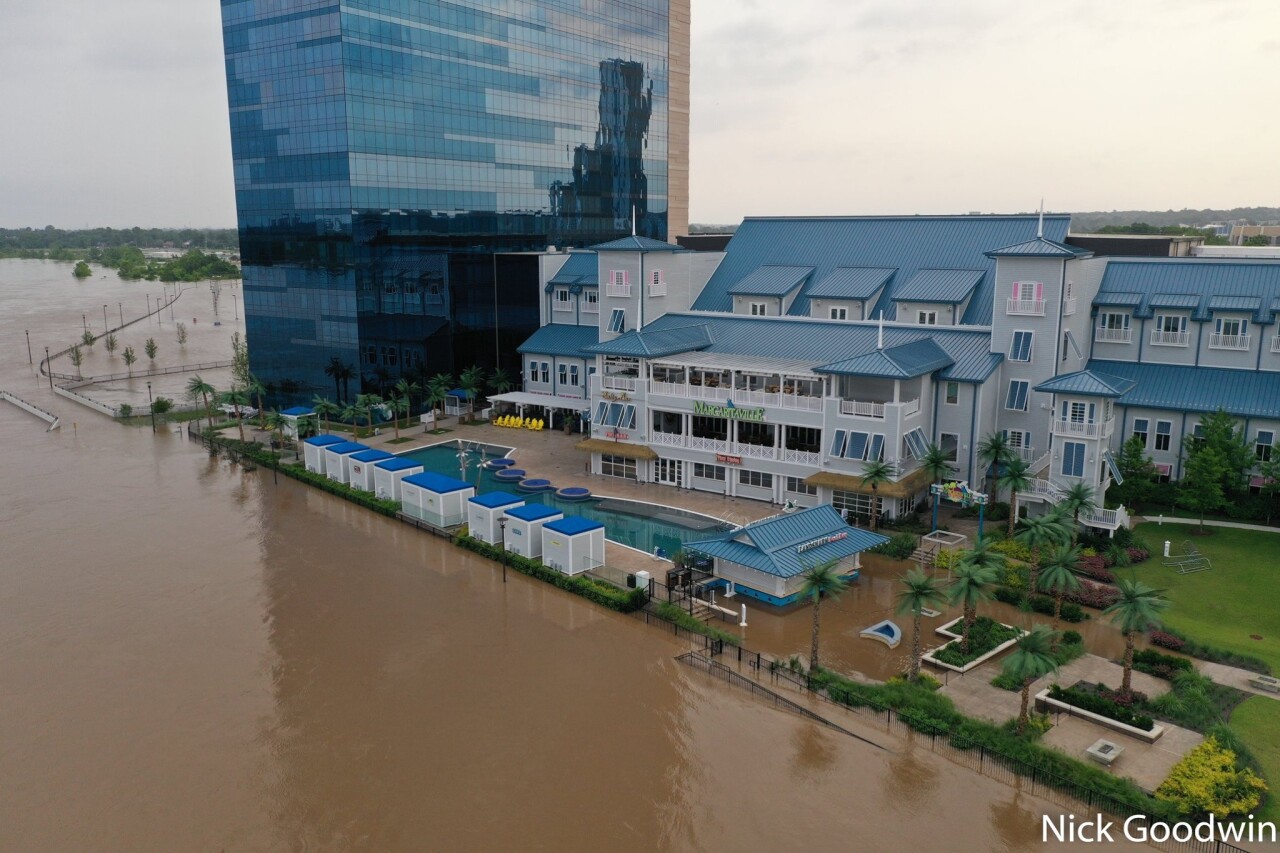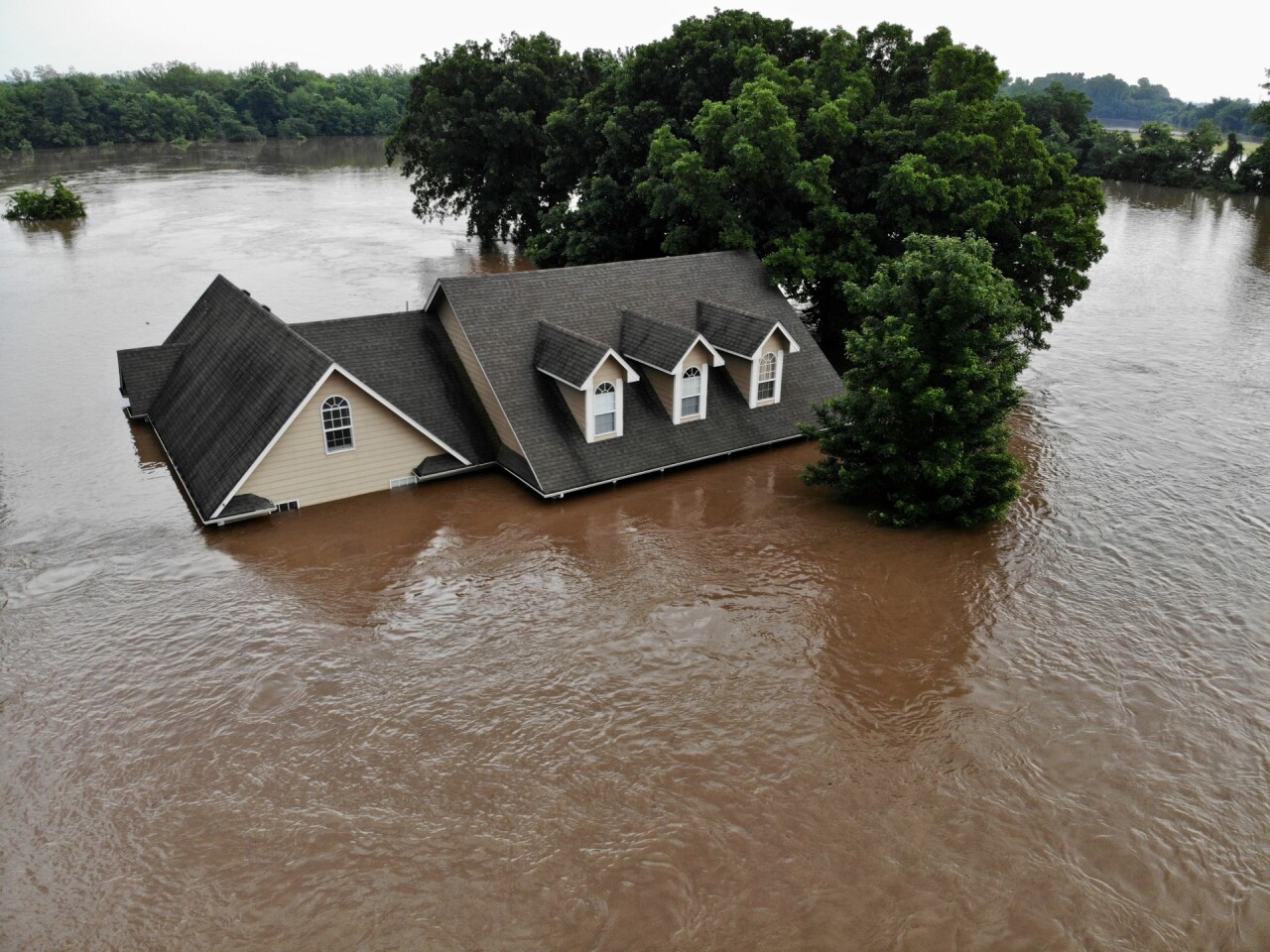In mid May of 2019, Green Country residents felt the impact of days of rain pouring down on newly planted flowers and mowed lawns. They yearned for the summer months of sunshine.
No one knew this would be a summer that Green Country would never forget.
It all started back in the Winter of 2018. Winter in the Colorado Rockies brought an unprecedented amount of snowfall. As seasons changed and the snow melted, the rush of water moving downstream encountered a watershed heightened by early Oklahoma Spring rains.
Three inches of rain fell in Green Country by mid-May. This put the Arkansas River at an abnormal 15 feet.
By Saturday, May 18, Tulsa dealt with tornado warnings and received over an 1 inch of rain. Thunderstorms brought another three inches to Green Country on May 20.
By Tuesday, May 21, after almost 2 inches of rainfall, a Flood Warning was issued for the Arkansas River.
City leaders and emergency personnel held a press conference that afternoon, saying the southern part of the county — like Jenks and Bixby — should be prepared to evacuate as a precaution.
The tremendous amount of rain filled into Keystone Lake, causing the Army Corps of Engineers to up their release rate at the Keystone Dam.
You will see the impacts throughout Tulsa by daybreak tomorrow if we’re going 160K, tonight, you’ll see that by daybreak and it will continue at that rate throughout the weekend. That’s the plan.
The Army Corps of Engineers said Tulsa would feel the impact in about eight to ten hours.
SEE MORE: Flooding in the Heartland: A Year Later - Timeline, Archives, New Stories of Hope
By Wednesday, May 22, schools, like Jenks Public Schools, began to announce Wednesday was the last day of school, due to the City of Jenks issuing a State of Emergency. School officials announced Jenks commencement ceremony would remain as scheduled for that night.
The City of Tulsa began to release maps for citizens that showed the impact of the 215,000 CFS release from Keystone Dam. That release was the minimum they could release to keep Keystone Lake from topping floodgates. If that happened, the floodgates wouldn’t work and the dam would fail.
Businesses started closing while the Red Cross and volunteers swarmed throughout Green Country to aid people impacted by rising waters.
River Spirit Casino and Resort closed due to the flood waters rising onto the pool deck and parking lots.

By Thursday, May 23, Tulsa city officials prepared for the worst after the Army Corps of Engineers announced an increase in the rate of water released at the Keystone Dam to 250,000 cubic feet per second.
Authorities said this would have a major impact on areas of Tulsa County and people needed to prepare to evacuate.
Take precautions to save your life. If you see water, you need to get ready to go
Flooding impacted Sand Springs and the western part of Tulsa County first, then central Tulsa and South Tulsa.
Levees around Tulsa County concerned officials. As of Thursday, the levees worked as planned, but the longer the massive amount of water sat on the levees, the more likely they could fail.
Officials urged people living near the levees to not take any chances and evacuate their homes. PSO started cutting power to communities impacted the hardest by the rising water.
Officials started sounding flood sirens in 30 minute intervals for six hours.
Officials warned people to not stop and gawk at the river as it continued to rise, as they were putting themselves and others in harms way.
By Saturday, May 25, storms brought another inch of rain within 24 hours, bringing the seven day rainfall to nine inches total.

On Tuesday, May 28, Mayor G.T. Bynum, along with city officials and the Tulsa Area Management Agency, held a news conference informing people to prepare for the worst case scenario -- the worst flooding in the history of Tulsa.
The rain levels are simply too unpredictable.
Levees were tested in ways they had never been tested before, Bynum said, and residents who lived behind levees were encouraged to relocate. The Army Corps of Engineers released 275,000 cubic feet per second (cfs) from Keystone Dam. In the absence of additional rainfall, the Corps said it would continue at this level of outflow through Thursday. Officials said they would keep a close watch on the potential rainfall overnight in the event the release rate increased.
The community set up sand bag locations and shelters across Tulsa, Jenks and Bixby.
An additional inch of rainfall added to the Arkansas River by Wednesday, May 29, causing it to crest at 23.41 feet, a second of all-time.
Good news arrived by Thursday, May 30. No rain in the forecast meant the Green Country community could survey the damage caused by the heavy impact of flood waters.
By Friday morning, the Arkansas River fell into the "minor" flood stage. The Keystone Dam release rate gradually began to decrease to 190,000 cubic feet per second.
Businesses and park began to announce reopenings.
"Thanks to the hard work of all city, county and state agencies and our park team, we are happy to announce Gathering Place will reopen on Saturday, June 1."
May of 2019 ended up as the wettest May on record, with 12.99 inches of rain that month.

Thunderstorms brought the last heavy rain of the season on Thursday, June 6. Adding an additional 2 inches of rain.
In the months ahead, people in Green Country began to slowly rebuild their lives. Some providing aid, while others leaned on the community for guidance and help.
As time passed, flowers were replanted and lawns were mowed again. The summer months of sunshine came, but flooding in the heartland was never forgotten.
Watch the News at 5, 6, and 10 for new stories of hope and the challenges our community is still facing.
Stay in touch with us anytime, anywhere.
Download our free app for Apple and Android and Kindle devices.
Sign up for newsletters emailed to your inbox. Select from these options: Breaking News, Severe Weather, School Closings, Daily Headlines and Daily Forecasts.


